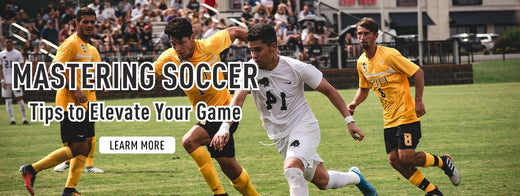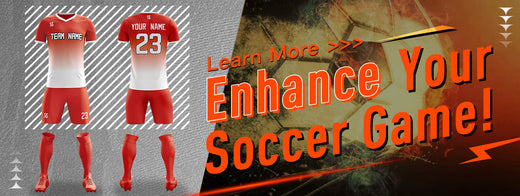Menu
-
-
- Home
-
Best Seller
-
Basketball
- Best Seller
- New Arrivals
- Classic Tops
- Reversible Tops
- Gradient Fashion Tops
- Graffiti Pattern Tops
- Split Fashion Tops
- Stripe Fashion Tops
- Classic Sets
- Reversible Sets
- Gradient Fashion Sets
- Graffiti Pattern Sets
- Color Block Sets
- Sequined Dress
- Backpack
- Aqua
- Black
- Blue
- Brown
- Cream
- Crimson
- Dark Gray
- Gold
- Gray
- Green
- Hunter Green
- Kelly Green
- Khaki
- Light Blue
- Light Pink
- Maroon
- Navy
- Neon Green
- Olive
- Orange
- Powder Blue
- Purple
- Red
- Royal
- Teal
- White
- Yellow
-
Baseball
- Best Seller
- New Arrivals
- Classic Style
- Stripe Fashion
- Gradient Fashion
- Split Fashion
- Raglan Sleeves
- Graffiti Pattern
- Pullover
- Two-Button
- Sleeveless
- Color Block
- Halloween
- American Flag
- Texas State Flag
- City Edition
- Denim
- Rhombus
- Star
- Flame
- Grid
- Ink
- Wave
- Hawaii
- Maroon
- Burgundy
- Camo
- Thorns Ribbed
- Christmas
- Aqua
- Black
- Brown
- Cream
- Crimson
- Dark Gray
- Gold
- Gray
- Green
- Kelly Green
- Khaki
- Light Blue
- Light Red
- Navy
- Neon Green
- Orange
- Pink
- Powder Blue
- Purple
- Red
- Royal
- Teal
- White
- Yellow
-
Softball
-
Football
- Best Seller
- New Arrivals
- Classic Style
- Drift Fashion
- Gradient Fashion
- Raglan Sleeves
- Graffiti Pattern
- Color Block
- Split Fashion
- American Flag
- Camo
- Aqua
- Black
- Brown
- Burgundy
- Cardinal
- Gold
- Gray
- Green
- Kelly Green
- Light Blue
- Midnight Green
- Navy
- Neon Green
- Old Gold
- Olive
- Orange
- Panther Blue
- Pewter
- Pink
- Powder Blue
- Purple
- Red
- Royal
- Scarlet
- Silver
- Teal
- Vegas Gold
- White
- Yellow
-
Flag Football
-
Hockey
-
Soccer
-
Jacket
- Best Seller
- New Arrivals
- Classic Style
- Split Fashion
- Gradient Fashion
- Stripe Fashion
- Raglan Sleeves
- Graffiti Pattern
- Two Tone
- Waterproof Softshell
- Hoodie Jacket
- Color Block
- Full Zip
- City Connect
- Camo
- Christmas
- Aqua
- Black
- Brown
- Crimson
- Gold
- Gray
- Green
- Kelly Green
- Khaki
- Light Purple
- Midnight Green
- Navy
- Old Gold
- Olive
- Orange
- Pink
- Powder Blue
- Purple
- Red
- Royal
- Texas Orange
- White
-
Hoodie
-
Pants
-
Hats
-
More
- Shop by Category
- Bulk Order Program
- +1 785-218-7244
- Login

Soccer Rules
April 23, 2025 7 min read

In a game of soccer, two teams face off on a rectangular field with one simple goal: to score by getting the ball into the opponent’s net. While the concept seems straightforward, the game is governed by a well-structured set of rules that apply around the world. So, how exactly does soccer work? In this article, we’ll break down the rules of soccer in plain, easy-to-understand terms.
What’s on this page
Soccer rules explained simply
Soccer points
How long does a soccer match last? Soccer pitch and playing time
Equipment and clothing
The different varieties of soccer
The History and Culture of Soccer
Summary: The Soccer Rules at a glance
Soccer rules explained simply
Soccer’s core rules prioritize fluid gameplay and fairness. Key principles include:
Ball movement: Players can use any part of their body except their hands or arms (goalkeepers within their penalty area are exempt).
Offside rule: A player is offside if they are nearer to the opponent’s goal than both the ball and the second-last defender when the ball is played to them.
Fouls and free kicks: Tripping, pushing, or dangerous play results in a direct or indirect free kick. Serious fouls may lead to yellow or red cards.
Throw-ins: When the ball crosses the sideline, the opposing team throws it back in with both hands over the head.
Goal kicks and corner kicks: If the ball exits behind the goal line, a goal kick (taken by the defending team) or corner kick (taken by the attacking team) is awarded.
Penalty kicks: Awarded for fouls inside the penalty area. A single attacker faces the goalkeeper from 12 yards.
Soccer points
Scoring in soccer might seem simple—just get the ball in the net. But if you look closer, goals can come from a variety of tactical plays and game situations. Whether you’re new to the sport or looking to understand the game more deeply, here’s a full breakdown of the main ways teams score goals in soccer:
1. Goals from Open Play
These are the most common types of goals, scored during continuous play without stoppages.
Counter-Attacks
When a team wins the ball and quickly pushes forward before the opponent can reorganize. Speed and precision passing are key here.
Build-Up Play
A patient approach that uses short passes and off-the-ball movement to break down the defense and create space near the goal.
Wing Play & Crosses
Wingers or full-backs drive down the flanks and send crosses into the box for strikers to finish—often with a header or volley.
2. Set-Piece Goals
Set pieces are opportunities to score when the ball is stationary. Many teams practice set plays to take advantage of these chances.
Corner Kicks
Taken when the ball goes out over the goal line, last touched by a defender. Usually aimed into the penalty area for a header or scramble.
Free Kicks
Awarded after a foul. A direct free kick can be shot on goal, while an indirect free kick requires a touch by another player first. Specialists can bend the ball over the wall and into the net.
Penalty Kicks
Awarded for fouls inside the penalty box. It’s one-on-one between the kicker and the goalkeeper, and statistically, one of the most successful ways to score.
3. Own Goals
These happen when a defending player accidentally puts the ball into their net.
It might be due to pressure, a poor clearance, or a miscommunication—either way, it counts for the opposing team.
4. Assists & Key Passes
While not goals themselves, assists are crucial to scoring.
Assist: The final pass that leads directly to a goal.
Pre-Assist (or secondary assist): The pass before the assist—often equally important.

5. Tactical Finishes
Teams often use well-planned movement and strategies to open up scoring chances:
One-Two Passes (Give-and-Go)
Quick exchanges between two players to beat defenders and open up space.
Feints & Dribbles
Using body movement and skill to create shooting angles and confuse defenders.
Long-Range Shots
Sometimes the best option is a powerful strike from outside the box, especially if the defense is packed in.
6. Creative Set-Play Routines
Advanced teams design creative free kick or corner routines involving:
Screening and blocking defenders
Late runs into the box
Decoy movements to create confusion
All of this is to create just enough space for a clean shot on goal.
⚽ Recap: Main Ways to Score in Soccer
|
Type of Goal |
Scenario |
Key Tactics & Skills |
|
Open Play Goals |
During regular play |
Passing, positioning, finishing |
|
Corner Kick Goals |
From corners |
Headers, timing, crowding the box |
|
Free Kick Goals |
From fouls |
Shot technique, accuracy |
|
Penalty Kicks |
From fouls inside the box |
Mental strength, shot placement |
|
Own Goals |
Accidental by the defender |
Pressure, mistakes |
|
Long Shots |
Outside the penalty area |
Power, surprise element |
How long does a soccer match last? Soccer pitch and playing time
A standard soccer match lasts 90 minutes, divided into two 45-minute halves with a 15-minute halftime break. The referee may add stoppage time for injuries or delays. In knockout tournaments, extra time (two 15-minute halves) and penalties may follow.
Pitch dimensions:
Length: 100–110 meters (110–120 yards)
Width: 64–75 meters (70–80 yards)
Goal size: 7.32 meters (8 yards) wide × 2.44 meters (8 feet) high
Equipment and clothing
Soccer requires minimal gear, emphasizing skill and agility:
Custom Soccer Jersey, shorts, and socks: Teams wear distinct colors. Goalkeepers wear contrasting jerseys.

Cleats: Designed for traction on grass or turf.
Shin guards: Mandatory for all players to protect against injuries.
Ball: Size 5 for adults (circumference: 68–70 cm).
The different varieties of soccer
⚽ 11-a-side Soccer
This is the most common form of soccer, played professionally and recreationally worldwide. Each team has 11 players, including one goalkeeper. Matches consist of two 45-minute halves, with a 15-minute halftime break. The pitch is about 100–110 meters long and 64–75 meters wide. Goals are scored by kicking the ball into the opposing team’s net. Offside rules, fouls, and throw-ins apply. It’s the format used in FIFA World Cup matches.
Futsal
Futsal is played on a hard indoor court, roughly the size of a basketball court. Each team fields 5 players, including a goalkeeper. The game consists of two 20-minute halves, and the ball used is smaller and less bouncy than a regular soccer ball. There are no walls—when the ball goes out, play resumes with a kick-in. Quick footwork, close control, and fast transitions are key. Slide tackles are generally not allowed.
Five-a-Side Soccer
This is similar to futsal but played on artificial turf, often outdoors in a caged area. Teams also consist of 5 players. Matches are usually shorter, often two halves of 10–15 minutes. Unlike futsal, walls can be used to bounce the ball back into play. It’s a fast-paced, casual game with fewer strict rules, often popular in community leagues or corporate events.
Beach Soccer
Beach soccer is played on soft sand with 5 players per team. Matches consist of three 12-minute periods. The pitch is smaller, roughly 35–37 meters long and 26–28 meters wide. Because of the sand surface, the ball is typically kept in the air with flicks, volleys, and bicycle kicks. Barefoot play is mandatory. Games are high-scoring and physically intense due to the challenging terrain.
Street Soccer
Street soccer is informal and can be played anywhere—backyards, parking lots, playgrounds. Team sizes vary (3v3, 4v4, etc.), and there are no official rules. Often, there are no goalkeepers, and games are played to a set number of goals. Creativity is the focus, with lots of nutmegs, fancy dribbling, and freestyle moves. Great for building confidence and technical skills.
Walking Soccer
Designed for older adults or those with limited mobility, walking soccer is a slower-paced version of the game. Running, jogging, or any form of physical activity is not allowed. Games are usually 5-a-side or 6-a-side, with smaller goals and a 40-minute total match time (two 20-minute halves). Played on indoor or small turf pitches, it promotes health, social connection, and inclusivity.
Blind Soccer
Also known as 5-a-side blind football, this Paralympic sport is played by visually impaired athletes. The ball contains noise-making devices so players can track its movement by sound. Teams have 5 players (including a sighted goalkeeper), and matches consist of two 20-minute halves. Players wear eyeshades to ensure fairness, and guides shout directions from the sidelines and behind the goal.
Teqball
Teqball is played on a curved table, similar in size to a ping-pong table. Players hit a soccer ball back and forth using any part of their body except their hands or arms. Matches are usually 1v1 or 2v2, with a scoring system similar to table tennis (first to 12 or 20 points). Great for developing ball control, timing, and agility.
⚽ The History and Culture of Soccer
It’s widely believed that the origins of modern soccer trace back to England, where the sport began to take shape in the mid-19th century. While various forms of ball-kicking games existed throughout ancient history—in China (Cuju), Greece, and Mesoamerica—it was in 1863 that the Football Association (FA) was formed in England to establish a set of standardized rules. This moment marked the official birth of association football, or what Americans now call soccer.
In its early days, soccer was played mainly in public schools and universities across England. The sport quickly gained popularity, spreading to other parts of the UK and Europe. By the early 1900s, soccer had become a global phenomenon, with countries across South America, Africa, and Asia embracing the game. FIFA, the sport’s international governing body, was established in 1904, and the first FIFA World Cup was held in 1930 in Uruguay.
Unlike sports that require expensive equipment or specific weather conditions, soccer’s simplicity—a ball and open space—made it universally accessible. From street corners in Brazil to schoolyards in Nigeria and frozen fields in Iceland, soccer grew into a sport that anyone could play.
A Global Sport with Local Flavor
Today, soccer is not just the most popular sport in the world, but also one deeply woven into the cultural fabric of many nations. In Europe, soccer is central to national pride and community identity. Clubs like Manchester United, Real Madrid, and FC Bayern Munich are more than teams—they're cultural institutions with generations of loyal supporters.
Soccer is almost a religion in South America, particularly Brazil and Argentina. It’s tied to music, dance, and politics, and national heroes like Pelé, Maradona, and Messi are treated as legends.
In Africa, soccer plays a unifying role, often bringing together communities during local tournaments and international events like the Africa Cup of Nations or the World Cup.
Meanwhile, in the United States, soccer's growth has been fueled by the rise of youth leagues, Major League Soccer (MLS), and international tournaments. Although it trails behind American football and basketball in popularity, soccer is rapidly becoming a household sport, especially among younger generations and immigrant communities.
Summary: The Soccer Rules at a glance
Objective: Score goals by getting the ball into the opponent’s net.
Match duration: 90 minutes (two 45-minute halves).
Key rules: No hands (except goalkeepers), offside, fouls result in free kicks or penalties.
Scoring: 1 point per goal; leagues use 3-1-0 point systems.
Variants: Futsal, beach soccer, and more.
Culture: A unifying global sport with a rich history and passionate fan bases.
Whether played in a stadium or on a dusty street, soccer’s simplicity and universal appeal make it a timeless sport. Kick off your journey into the beautiful game today! ⚽
Leave a comment
Comments will be approved before showing up.
Also in Soccer

The Rise of Beach Soccer: Combining Athleticism with Coastal Culture
July 15, 2024 2 min read

Mastering Soccer: Tips to Elevate Your Game
July 15, 2024 2 min read

Enhance Your Soccer Game!
June 25, 2024 2 min read
The Power of Custom Soccer Jerseys.Soccer isn’t just a sport; it’s a culture, a passion that unites fans and players alike. One of the most iconic symbols of this sport is the jersey – a garment that embodies team spirit, identity, and pride. While off-the-shelf jerseys serve their purpose, custom soccer jerseys offer a whole new level of personalization and performance.
